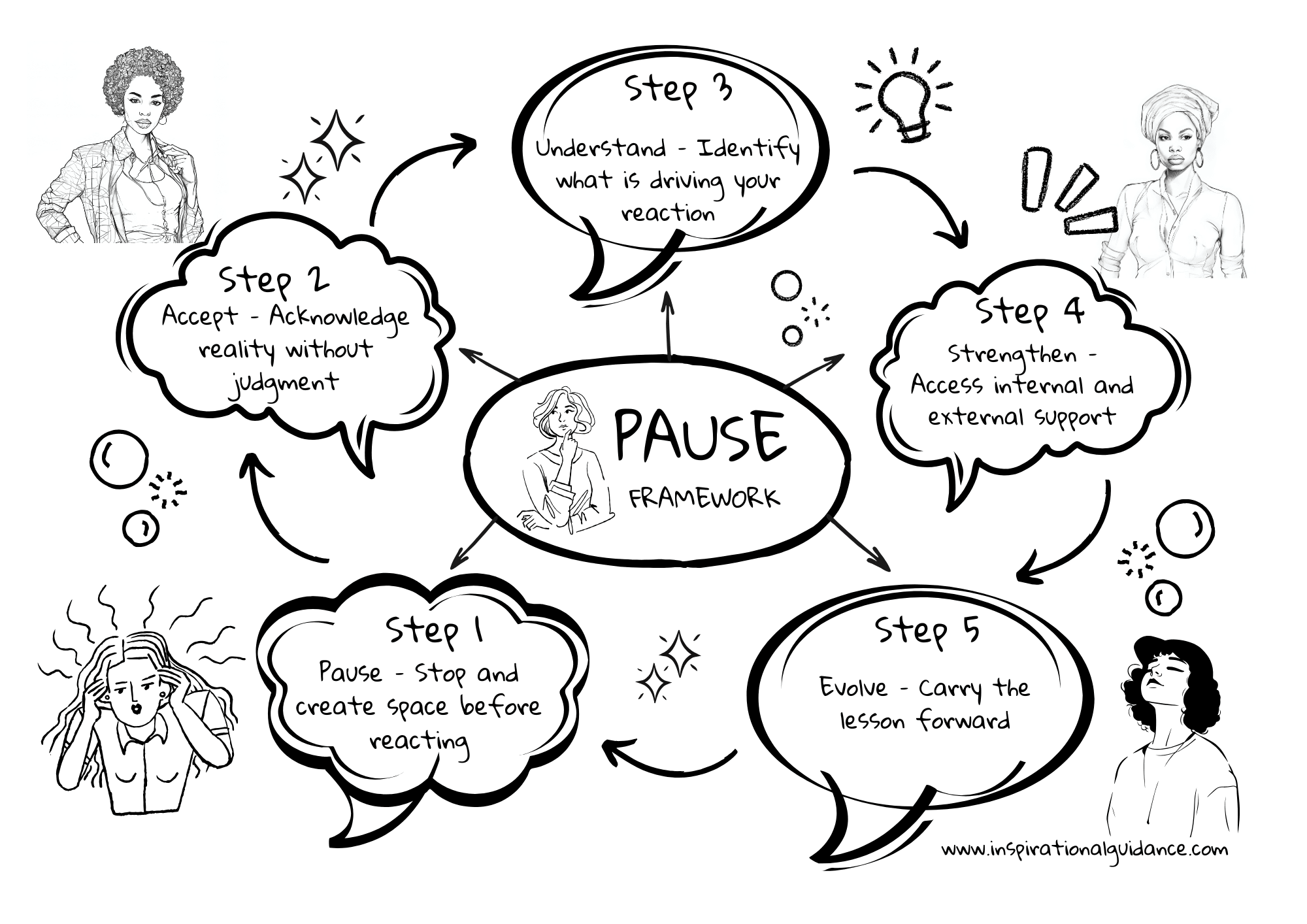Emotional Resilience Is Not About Avoiding Pain. It's About Meeting It Differently

Thanks, for sharing:
There is a quiet misconception about resilience. We often imagine that resilient people have learned how to dodge life’s punches, that they somehow sidestep pain altogether. But the truth is simpler and harder. Resilience is not about avoiding pain. It is about learning how to meet it differently.
Setbacks, rejection, and loss, these types of stress will always be a part of life. What changes is how you hold yourself steady when they arrive. Emotional resilience is the ability to pause and to choose your response instead of collapsing under the weight of the moment.
At Inspirational Guidance, we call this the PAUSE method. It is not about denial or toughness. It is about space, the gap you create between what happens and what you do next.
Why It Feels Hard
Pain catches us off guard. It tempts us to catastrophize using phrases like:
“This always happens to me… This means I cannot cope… This will ruin everything.”
Those interpretations feel real in the moment, but they are just that, interpretations.
This is where both Stoic wisdom and modern reflective practices align. The Stoics encouraged incommoda amplexare, which means “embrace the discomfort.” They believed that strength is built not by avoiding hardship, but by welcoming it as practice.
In NLP, the same principle shows up in reframing. An event itself has no fixed meaning until you interpret it. Change the frame, and you change how the event lives inside you. Instead of “This is proof I failed,” you might choose “This is evidence I am being stretched.” The external event is the same, but the way you carry it shifts.
Everyday Examples
A harsh email at work: Instead of reading it as an attack, you might reframe it as clumsy communication. The sting eases, and you can respond with clarity instead of retaliation.
A fitness setback: Rather than thinking “I am back at square one,” you might view it as part of training, a chance to learn your limits and build back stronger.
A difficult conversation: Anticipating pushback ahead of time means you enter the moment steadier, less surprised, more able to choose your words with intention.
These are not tricks to deny reality. They are ways to reduce the unnecessary suffering we add through interpretation.
The Role of Anticipation and Training
Emotional resilience deepens through preparation. If you know life will shift, and it always does, you can train yourself to meet it. Just as an athlete rehearses for pressure, you can practice pausing under small stresses so the larger ones do not knock you flat.
Anticipation: Instead of hoping life will be smooth, accept that challenge is part of the path. Picture where stress might appear and decide in advance how you want to respond.
Training: Use everyday moments as practice. Notice your irritation in traffic, your frustration with delays, your impatience in small conflicts. Each is an invitation to pause, reframe, and respond with steadiness.
Over time, this training builds an inner muscle. You stop fearing the next challenge because you know you have rehearsed for it.
Small Ways to Apply This Today
Reframe the Story: The next time something goes wrong, write down two alternative interpretations. Ask: what else could this mean? Which version strengthens me?
Anticipate the Trigger: Each morning, think of one moment that might test your patience. Plan your pause in advance.
Embrace a Discomfort: Choose a small stretch, cold shower, tougher workout, saying no to an easy comfort. These tiny practices echo Stoic training. They remind you that discomfort is survivable.
Capture the Takeaway
Emotional resilience is not about being untouchable. It is about being adaptable. Pain will still arrive, but with reframing, anticipation, and training, you create space to meet it with steadiness rather than collapse.
The Stoics knew this and NLP echoes this making it possible for you to live this.
Your Next Step
Try this reflection tonight: Where did I reframe well today? Where did I let an old interpretation take over? Write it down. Notice the difference. That is resilience in action — not in theory, but in practice.

